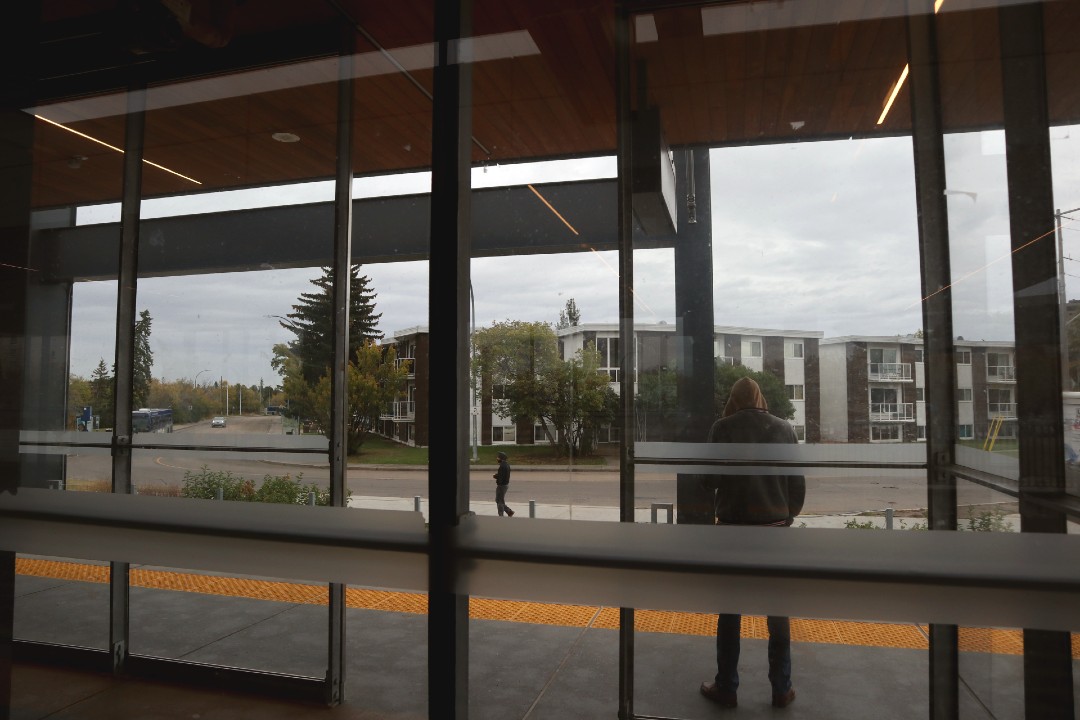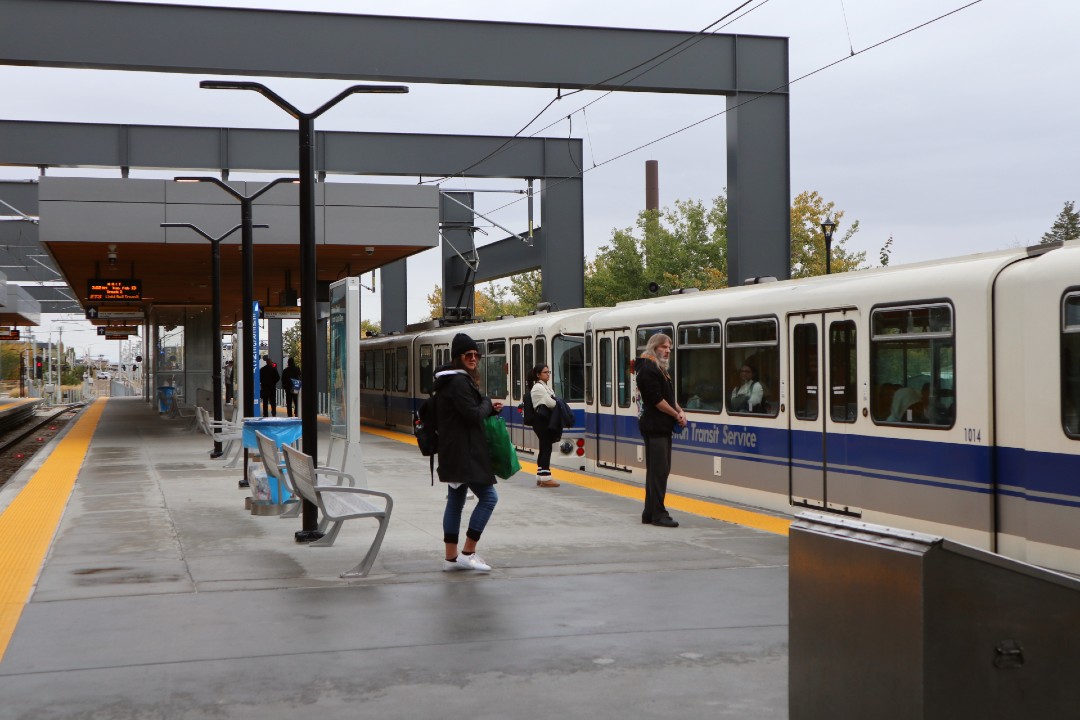Edmonton's head of transit said a redesign that emphasizes visibility has turned one of the least safe LRT stations in the city into one of the safest.
Stadium Station was one of five LRT stations on the Capital Line when the system opened in 1978. The old station had an underground concourse that was essentially a series of enclosed hallways and stairwells that allowed riders to walk beneath the tracks to reach the platform.
Reconstruction of Stadium Station started in 2020 and cost the city about $28 million. "Stadium Station was in need of redevelopment and an overhaul just based on the age of the infrastructure," Carrie Hotton-MacDonald, branch manager of Edmonton Transit Service, told Taproot in an interview at the station. "It was a fantastic opportunity to rethink this entire design."
The old Stadium Station was consistently ranked among the top five stations on the LRT system that dominated calls for service to the ETS control centre. Those calls could be for security incidents, disorder, crime, or trespassing.
Redevelopment of the station was completed in May 2023. Hotton-MacDonald said the station has seen a 50% reduction in calls for service since 2019. It now places in the bottom five of a list that it sometimes used to top. This data doesn't include 9-1-1 calls.
The station's new design is safer because it has opened up sightlines, Hotton-MacDonald said. The concourse, stairwells, and hallways are gone, replaced by a platform that's at ground level, and entrances and exits that flow off of street sidewalks. When a rider is standing on the new platform, they can see the sidewalk next to the station, the low-rise apartments across the street, and the Kinnaird Ravine farther down the street. These "eyes-on-the-street," a term coined by urbanist Jane Jacobs, act as natural deterrence for unwanted activity. The natural surveillance also makes riders feel safer, Hotton-MacDonald said.
"When you have those open sightlines combined with more foot traffic nearby, it connects transit riders with people who are nearby and it just helps you feel safer when there's more people around," she said.

The Stadium Station replacement began in 2020 and cost around $28 million. (Stephanie Swensrude)
Safety wasn't the main consideration when council decided to replace the station, Hotton-MacDonald said. But within the last 15 years, the city has started to factor safety and accessibility into design. "It just makes sense if we have the opportunity, and for accessibility, because a lot of times those things work really well together," Hotton-MacDonald said. "So, as an example, here we have really open wide platforms, lots of open space, so it improves accessibility, but again (it) also has positive outcomes for safety."
The new station is part of a redevelopment of the surrounding Parkdale, Cromdale, Boyle Street, and McCauley neighbourhoods. The Stadium Station Area Redevelopment Plan noted the former station had few pedestrian and cycling route connections, was surrounded by roads with high volumes of vehicles, and didn't have enough medium- to high-density housing nearby to serve it. There was a large vacant lot beside the station, where Rohit Group is developing Stadium Yards, which will eventually house up to 2,000 people. The redevelopment plans also identify industrial land that surrounds the LRT tracks south of the station as a place where further dense housing could be built.
Hotton-MacDonald said she hopes the transit-oriented principles in the redesign can be emulated at other stations in future upgrades. "I think that it's a great example of that integrated approach — looking at not just the station itself but everything happening around the station, and how these things work really well together," Hotton-MacDonald said. "This, to me, is my favourite station."
Hotton-MacDonald said the next station that could be up for renewal is Coliseum Station, also one of the original five from 1978. Coliseum's design is similar to what Stadium's used to be, with an underground concourse and "lots of nooks and crannies," Hotton-MacDonald said. The city plans to eventually relocate Coliseum Station north to 119 Avenue NW and add a new station at 115 Avenue NW as part of the Exhibition Lands Redevelopment project. There is no funding currently allocated for upgraded stations.

The Stadium Station replacement began in 2020 and cost around $28 million. (Stephanie Swensrude)
